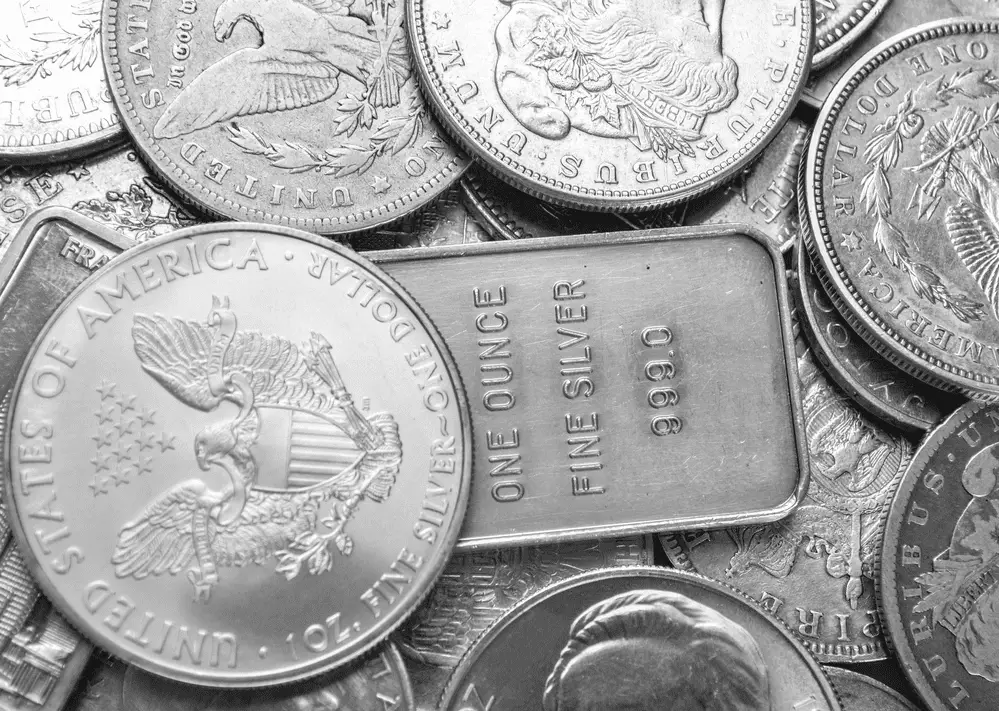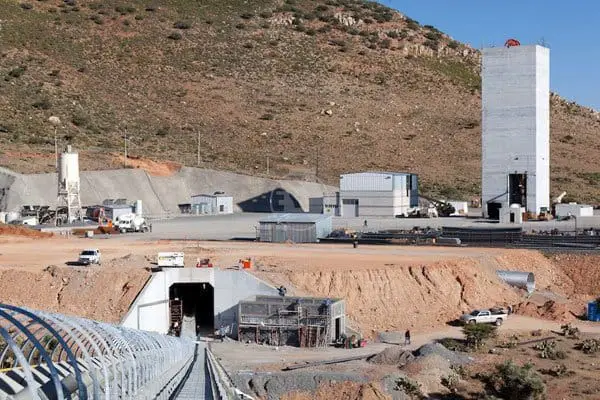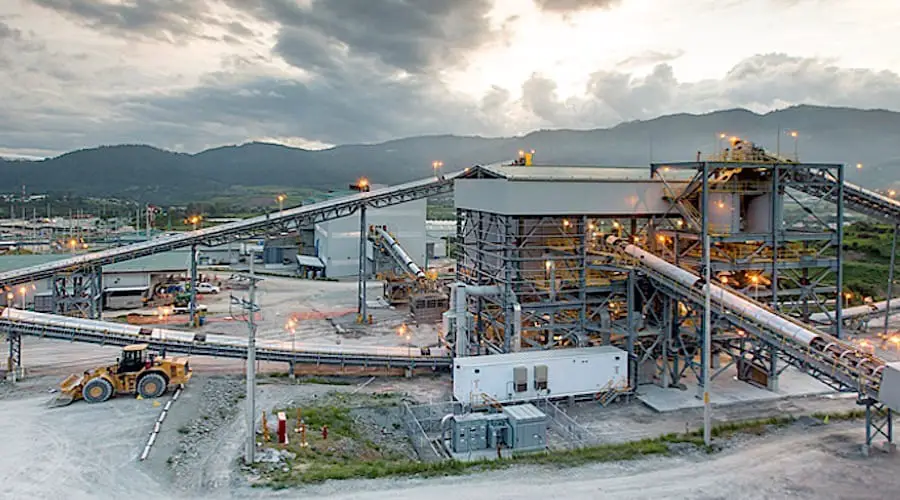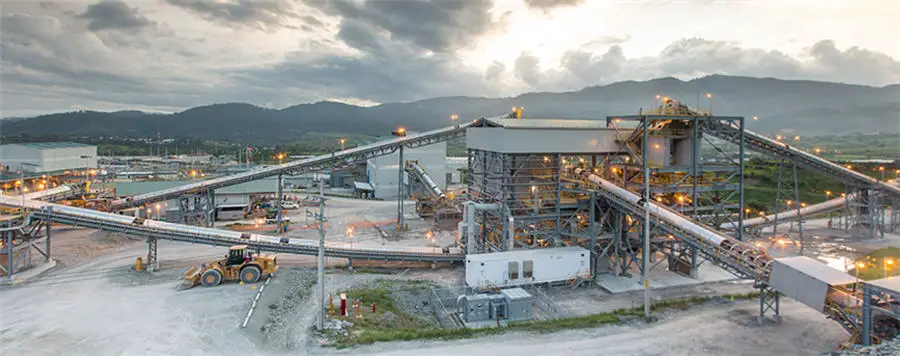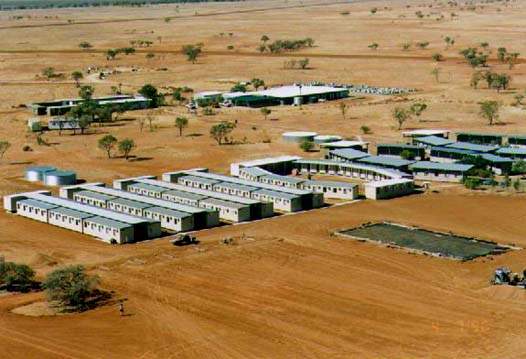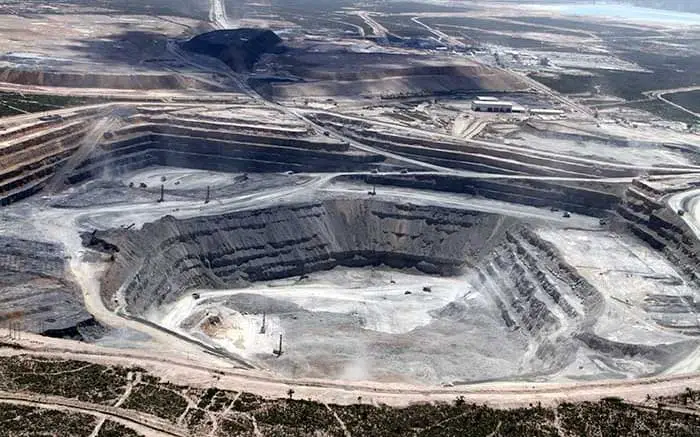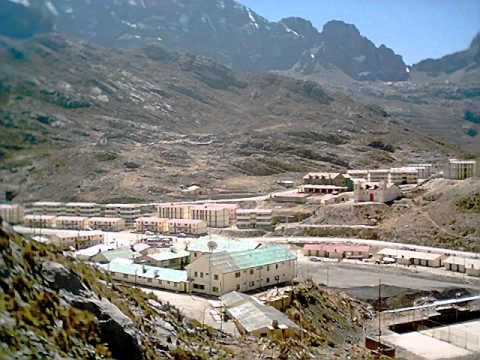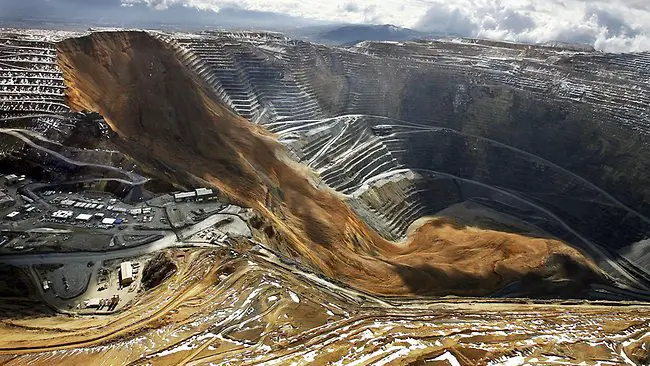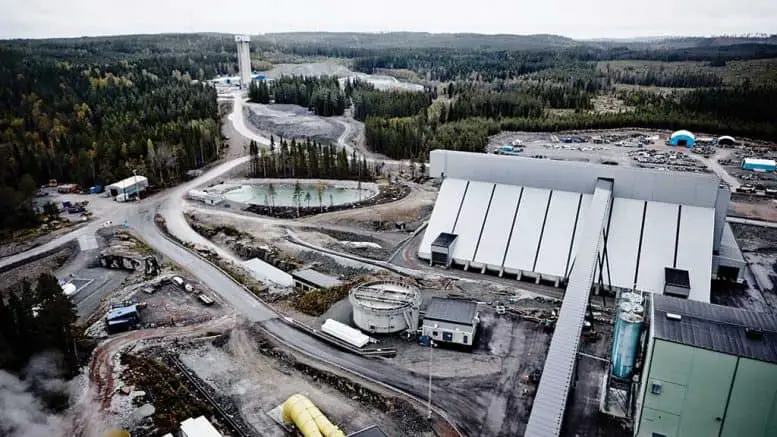Table of Contents
Silver is a precious metal that society has found uses for since ancient times. As such, silver mines have been in operation for just as long. Dating back to ancient history, historians believe that silver was being separated from lead back during the fourth millennium BCE. Silver is one of the seven metals of antiquity, along with gold, copper, mercury, lead, tin, and iron. In the ancient mines of Athens, the ores were washed and smelted to produce silver in a non-pure form.
*This post may contain affiliate links. As an Amazon Associate we earn from qualifying purchases.
The occurrence of silver is almost that of mercury, being less than one percent of the Earth’s crust. Mostly occurring in sulfide ores, silver is very rarely found in a pure form. Due in part to its history and rarity, silver plays strong parts in mythology where the metal often has a spiritual or supernatural property. The tales have dried up but the uses for silver have not as it is used for everything from currency to electronics to medicine. Even nanoparticles of silver are used in conductive inks for computer chips, and pure silver can be used as a food coloring agent.
These uses and more are why silver mines are becoming more and more popular with mining companies. Right now, silver mines are in operation all over the world, the biggest of which are listed in this article. Due to the nature of mining, the amount of reserve in any one mine is lowered in proportion to how much ore is extracted. The top silver mines of today may not be the same a decade from now, keeping the environment shifting and big mining companies on their toes. With the value and price of silver increasing by the day, these mining companies have their hands full getting ahead of the game.
Regardless of what the future may hold, here is a list of the top ten silver mines in production today:
Silver Mines FAQ
1. What Are Silver Mines?
Silver mines are man-made open pits or underground mines where silver is extracted. Usually, the silver comes as part of other minerals, such as copper, lead, zinc, nickel, or gold. Silver is often a byproduct of mining these other minerals, especially in compounds of sulfur.
2. What Does Silver Do?
Throughout history, silver has been used for jewelry and coins for currency. In more modern times, its uses have expanded to electronics, medicine, and optics. Silver is used a lot in the electrical, energy, and automotive industries. It is used so widely because of silver’s properties including its unique strength, ductility, malleability, and conductivity. Silver can endure extreme temperatures, the melting point being over 1,700 degrees Fahrenheit.
3. How Does a Silver Mine Work?
Silver is often pulled out of an open pit or underground mine as ore. In the flotation method, the ore is crushed and put through a floating process to extract the silver and other valuable minerals. Silver is also extracted by smelting or chemical leaching. Mercury was used for silver extraction in the 1800s but not so much today.
4. Where Can You Buy Silver?
Silver can be purchased almost anywhere in the form of coins or jewelry. While not as expensive as gold, this mineral is still precious and costly. If you’re looking to buy pure silver for your own uses, the value is around $495 per kilogram or about fifteen dollars per ounce.
5. What Countries Have the Most Silver?
Silver is mostly found in the Americas, particularly in southern Mexico and the southwestern portion of the United States. In fact, after conquering the Americas, Europe experienced an inflammation in its economy because of the sudden and vast amounts of silver being found. The countries producing the most silver include Mexico, the United States, Canada, Peru, Poland, Bolivia, and Australia.
How We Reviewed
Rather than being based on how much has ever been produced or how much is in reserves, this list is ordered in how much silver has been produced in a single year. Using data from IntelligenceMine assembled in 2016, the list was compiled with the production rate that each company claimed on each individual mine. To attain as accurate of a list as possible, the data was cross-referenced with other entities to ensure accurate details.
Overall Production Range of These Mines
Being the most productive silver mines on the planet, there’s going to be a lot of value brought out of the ground from their efforts. The lowest annual production rate on this list is nearly ten million ounces of silver. The highest hovers nearly at the point of twenty-two million ounces. While production will fluctuate from each mine over time, the rates of the top ten for the future will either stay the same or grow as more technology becomes available before shortening as the world’s silver reserves run low.
What We Reviewed
- Saucito
- Escobal
- Dukat
- Cannington
- Antamina
- Penasquito
- Uchucchacua
- Fresnillo
- Pirquitas
- Garpenberg
Saucito (Mexico)
Photo credit by: mexiconewsdaily.com
Features
Saucito mine is in Zacatecas, Mexico and owned by Fresnillo. This mine is the largest producer of silver in the world. Being in operation since 2011, Saucito employees over 750 workers and over 1,800 contractors.
Production
The reserves on average hold 261 grams per ton of silver and a little over one gram per ton of gold. The mine has produced over twenty-one million ounces of silver, nearly seventy thousand ounces of gold, over seventeen thousand tonnes of lead, and over twenty thousand tonnes of zinc. A tonne is equivalent to a metric ton.
Escobal (Guatemala)
Photo credit by: mining.com
Features
Escobal mine is near Guatemala City, Guatemala and owned by Tahoe. This mine extracts the ore by using longhole stoping methods, meaning they process the ores by flotation to get the more precious lead and zinc concentrates. The mine has faced hardships because of protest from the local Xinca people and suspension of its mining license from Guatemala’s Supreme Court, so the future of this mining operation is unclear.
Production
The reserves are estimated to hold 367.5 million ounces of silver. The mine produced over twenty-one million ounces of silver in 2016.
Dukat (Russia)
Photo credit by: mining.com
Features
Dukat is in Dukat, Russia and owned by Polymetal. As one of Polymetal’s first operations, this mine is also one of the largest gold mines in Russia, becoming the company’s flagship mine.
Production
Dukat produced over twenty-two million ounces of silver in 2015 but only close to twenty million ounces the following year, dropping twelve percent. The gold is estimated to be a reserve of nearly eight million ounces.
Cannington (Australia)
Photo credit by: mining-technology.com
Features
Cannington mine is near Queensland, Australia and owned by South32. Coming into operation in 1999, Cannington was the largest producer of silver in the world until 2010. South32 was once part of the company BHP Billiton’s before a split with this mine being part of the deal.
Production
In 2005, the reserves were estimated to hold 477 grams per ton of silver. In eighteen mega-tonnes of sulphide ore, over ten percent is lead and nearly four percent is zinc. Silver production in 2016 was eighteen and a quarter million ounces.
Antamina (Peru)
Photo credit by: mining-technology.com
Features
Antamina mine is in the Andes Mountains of Peru and owned by Xstrata, BHP Billiton, TeckCominco, and Mitsubishi. In addition to silver, this mine is one of the largest producers of copper and zinc in the world, as well as producing molybdenum and lead. A pipeline over three hundred kilometers takes copper and zinc concentrate out to a port for shipment. Among all the mines in this list, Antamina has the largest year-on-year gain.
Production
The reserve is one hundred mega-tonnes with nearly nine grams per ton of silver, over one percent copper, and less the one percent of zinc and molybdenum. The mine produced eighteen million ounces of silver in 2016.
Penasquito (Mexico)
Photo credit by: northernminer.com
Features
Penasquito Polymetallic mine is in Zacatecas, Mexico and owned by Goldcorp. With two open pit mines, named Penasco and Chile Colorado, Penasquito produces gold, silver, lead, and zinc. This mine also uses flotation processing along with grinding techniques. Once being the biggest silver producer, Penasquito lost that role in 2016 due to lower-graded metals.
Production
The mine produced over twenty-five million ounces of silver in 2015, which dropped to nearly eighteen million ounces in 2016. The reserve is estimated to hold 911.8 million ounces of silver, over fifteen million ounces of gold, over two million tonnes of lead, and over six million tonnes of zinc.
Uchucchacua (Peru)
Photo credit by: mining.com
Features
Uchucchacua mine is in Oyon, Peru and owned by Buenaventura. This mine produces silver, gold, zinc, and lead. As opposed to an open pit, this mine is only of the underground type, reaching four to five thousand meters above sea level.
Production
Uchucchacua produced over sixteen million ounces of silver in 2016. The reserve is estimated to have 445 grams per ton of silver.
Fresnillo (Mexico)
Photo credit by: bizvibe.com
Features
Fresnillo mine is located in Fresnillo, Mexico and owned by Fresnillo, the company of the same name. Mine records date as far back to 1554 at Fresnillo mine, making it one of the oldest continuously operated mines in the world. This mine also uses flotation methods. Fresnillo mine employes over one thousand people and over 1,600 contractors.
Production
The mine produces over sixteen million ounces of silver, over thirty-eight thousand ounces of gold, over twenty tonnes of lead, and over thirty tonnes of zinc. Estimates of the reserve includes 179.7 million ounces of silver and 590 ounces of gold.
Pirquitas (Argentina)
Photo credit by: gettyimages.co.uk
Features
Pirquitas mine is in Jujuy, Argentina and owned by Silver Standard. Ore is taken from the open pit mine and crushed before the metal is extracted with flotation methods. Rather than as at most mines with machinery on site, this mine relies on trucks and loading units to ship the ore to third party smelters.
Production
Reserves are estimated to hold seventy-four million ounces of silver. Annually, the mine produces over ten million ounces of silver.
Garpenberg (Sweden)
Photo credit by: northernminer.com
Features
Garpenberg mine is in Hedemora, Sweden and owned by Boliden. Sweden’s oldest mine still in operation, Garpenberg has records dating to the thirteenth century when the mineral primarily produced was iron. Today, the mine produces silver, zinc, and lead.
Production
As of 2006, the reserve totaled nearly five million tonnes which included six percent zinc, two and a half percent lead, less than one percent copper, ninety-nine grams per ton of silver and less than one gram per ton of gold. The mine produces nearly ten million ounces of silver per year.
Conclusion
Each of these silver mines comes with its own merits. While some are beginning to dwindle, others are just starting to ramp up. A few constantly stay with the same numbers year after year. For instance, the mines of Saucito and Fresnillo, both in Mexico, are the most lucrative because of their staying power. Fresnillo has been in operation for centuries and still produces a steady stream of silver.
Because silver is so useful and growing in cost, finding different ways to extract the metal from the minerals it’s usually compounded with has become a stronger driving necessity over time. Driving down costs and levels of dangerous risks are paramount. Silver is often extracted by constant smelting, but electrolytic refining is becoming more popular in the modern era. An electric current forces the silver ore to separate from copper, lead, and zinc, producing many types of metals all at once. With modern technology, the electrolytic method is much faster and cheaper than using smelters or other means of separation. When mines able to extract silver easier, production can become more rampant.
What’s most fascinating is that the value of silver has only risen higher in the modern era. With all of its uses in industry and electronics, production of silver may come to supersede gold in the future, if we’re to believe some pundits. Whether that comes to pass or not, silver now has more uses than ever and so is becoming more valuable than ever, leading to more silver mines around the world. As production climbs higher for old and new silver mines alike, a list similar to this one may reveal a much higher production rate in coming decades. Until then, we’re producing more silver than we ever have before and we have these ten silver mines to thank for that.

